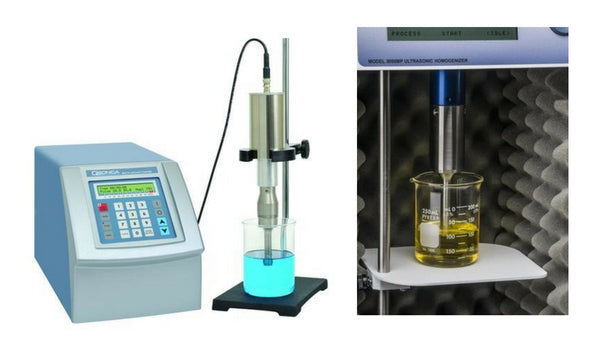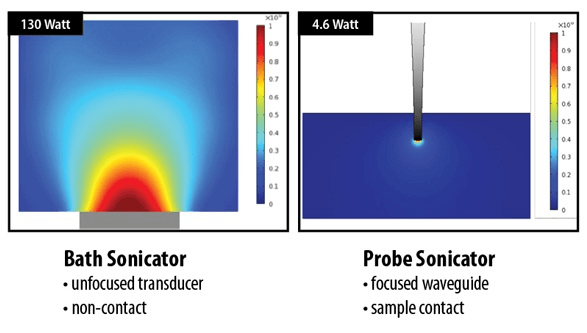Many authors combine sonication and mixing especially when using probe sonicators as the power is directed into a small volume and the low shear forces do not generally ensure that all the polymer passes through.
Water bath sonicator vs probe.
Probe sonication is the most frequently used process for the disruption of cells.
Bath sonication is useful for large batch preparations of tissues and cells.
Sonication is the act of applying sound energy to agitate particles in a sample for various purposes such as the extraction of multiple compounds from plants microalgae and seaweeds.
It has come to my attention that sometimes our water bath sonicator is not being operated correctly when used for degassing buffers.
Probe and bath sonication is a simpler technology using low frequency and unfocused acoustic energy.
In the laboratory it is usually applied using an ultrasonic bath or an.
Taylor in advances in structural adhesive bonding 2010.
By the way i am using a sonicator that relies on a certain percentage of sonication output.
Ultrasonic processor probe sonicator is a tool specially designed for pharmaceutical chemical labs and various research institutes colleges universities.
First of all please note that sonication alone is a poor choice for degassing our commonly used buffers.
Focused ultrasonicators vs probe bath sonicators the technologically advanced afa is often confused with more general sonication technologies because both utilize acoustic energy.
Sonication is a cell disruption method which utilizes sound energy or high frequency sound waves to break cells.
Ultrasonic frequencies 20 khz are usually used leading to the process also being known as ultrasonication or ultra sonication.
Sonication vacuum is much more efficient.
Principle of ultrasonic processor.
High frequency vibrations are produced by the s s.
It is a physical cell disruption technique which is highly effective in.
The key difference between probe sonicator and bath sonicator is that in probe sonication the probe is in direct contact with the sample while bath sonicator isolates the sample from the energy source.
Velocity horn which is immersed into the liquid to be processed.
You can get a bransonic 0 5 gallon ultrasonic bath two right images below for under 500.
An efficiency comparison sonication processes can be carried out by the use of a probe type ultrasonic homogenizer or an ultrasonic bath.
A q700 sonicator left below for example only processes up to one liter and costs almost 5000 when a probe is factored in.
Although both techniques apply ultrasound to the sample there are significant differences in effectiveness efficiency and process capabilities.









